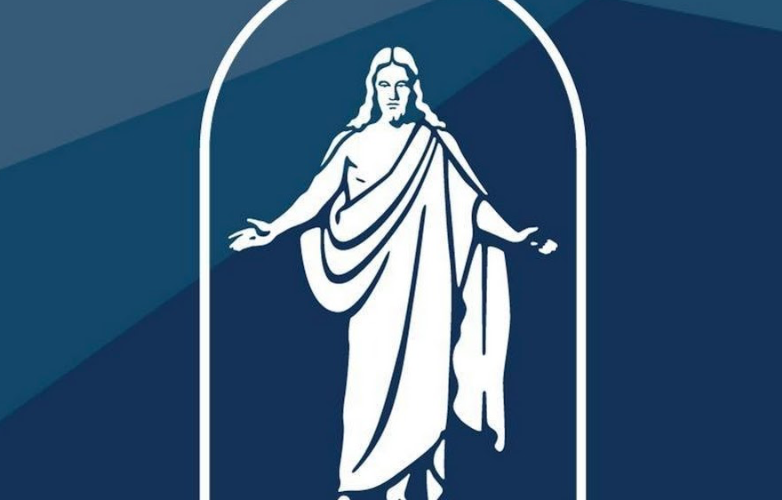This is why comparing 2016 vs 2020 among LDS is so hard – THIRD PARTY VOTES.
Regression w/basic controls.
If 3rd parties are included, there’s no difference in the young LDS vote for Trump.
If it’s just the two-party, Trump did 20+ points worse among the young in 2020. pic.twitter.com/R2Cl7aeaQt
— Ryan Burge 📊 (@ryanburge) May 15, 2021
There are times, when you are reading Ryan Burge on Twitter (which journalists should, of course, be doing) and you see signs that he has read some religion-news related item somewhere that has caused him to do that thing that he does — sift through lots of poll numbers looking for a new angle.
What we have here is a pair of tweets linked to a Christian Sagers think piece at The Deseret News that I had missed. The headline: “Are Latter-day Saint voters turning blue?”
That’s blue as in learning toward the Democratic Party, not feeling sad or depressed. That would be a huge news story hinting at other possible changes among centrists on moral and cultural issues.
Burge send me this comment containing what he thinks is the key question about this possible news twist.
The big question is: have younger LDS really abandoned the Republican Party? I don’t think that we will ever know for sure until Trump is off the ballot completely.
So where to begin? Here is the overture in Sager’s piece, noting that a recent:
… Cook Political Report concludes that all four of Utah’s congressional districts are among the most Democratic-trending in the country. Latter-day Saint voters in Arizona doubled their Democratic turnout from 2016.
Meanwhile, a Democratic activist group with whom I spoke recently is optimistic about converting Latter-day Saint women, traditionally Republican, who it believes to be rejecting the GOP in greater percentages than other religious demographics.
That candidate Donald Trump fared so poorly among members of The Church of Jesus Christ of Latter-day Saints in 2016 was met with astonishment in national media coverage and a flurry of conjectures that Latter-day Saints were up for grabs.
And yet, the political status of the Latter-day Saint voting bloc doesn’t fit into a tidy narrative. Yes, there are signs that some Latter-day Saints are reconsidering the modern GOP, but at the same time there are suggestions that Latter-day Saints remain reliably Republican.
Sure enough, there are other complications that need to be considered when looking at conservatives in this Donald Trump-warped political age.
For example: If political wars continue between Trump GOPers and other camps within the party, reporters may want to start paying attention to Third Party options that might appeal to voters who are frustrated conservatives.
That certainly appeared to be a reality in 2016 — since there was a logical option for Latter-day Saints. Note the Burge tweet at the top of this post and this comment by Sager:
Neither presidential candidate in 2016 put forward a reason to believe they would honor the virtues held close by people of faith. A convenient third party candidate, Evan McMullin, gave queasy voters in Utah and elsewhere a way out.
Latter-day Saint support for the Republican nominee — 72% in 2008, 83% in 2012 — dropped to 52% in 2016, according to data analyzed by Ryan Burge, an assistant professor at Eastern Illinois University and contributor to the Religion in Public blog.
In terms of looking toward the future, what sent LDS voters searching for an option to the Republican Party? What would be the unique blend of personality and policies that was Trump.
Age also made a difference.
The age divide among Latter-day Saints is kind of stunning in 2016 vs 2020.
Among LDS under the age of 40:
Trump got 44% in 2016 and 46% in 2020.
Clinton got 23%. Biden got 46%.Among LDS over 40:
Trump got 58% in 2016 and 80% in 2020.
Clinton got 23%. Biden got 18%. https://t.co/4QtiQl7sYW pic.twitter.com/1jj2z7lKTZ— Ryan Burge 📊 (@ryanburge) May 14, 2021
There’s one other crucial point to note, when asking if Latter-day Saints — and maybe other centrist cultural conservatives — are ready to abandon the GOP.
The bottom line: There’s more to political identity than the name at the top of the ticket. Here is a key chunk of the Sager piece:
Yet, partisan identity is not easily abandoned, cautions Quin Monson, a professor of political science at Brigham Young University. “And Latter-day Saints are no exception.”
The most illustrative example is rather mundane: “Look down the ballot,” Monson says. Despite an unappetizing presidential choice, Latter-day Saints in Utah largely helped elect Republicans to state offices. Last year they helped elect a Republican governor who enjoyed a comfortable 63% share of the statewide vote.
The down-ballot results were complex and intriguing in 2020 — especially in crucial states (looking to the future) such as Florida, Georgia and Texas.
Yes, keep an eye on Trump. But Burge — and others — are suggesting some other religion-and-politics questions to ask, we well.











